Pascal Mettes
Hyperbolic Safety-Aware Vision-Language Models
Mar 15, 2025Abstract:Addressing the retrieval of unsafe content from vision-language models such as CLIP is an important step towards real-world integration. Current efforts have relied on unlearning techniques that try to erase the model's knowledge of unsafe concepts. While effective in reducing unwanted outputs, unlearning limits the model's capacity to discern between safe and unsafe content. In this work, we introduce a novel approach that shifts from unlearning to an awareness paradigm by leveraging the inherent hierarchical properties of the hyperbolic space. We propose to encode safe and unsafe content as an entailment hierarchy, where both are placed in different regions of hyperbolic space. Our HySAC, Hyperbolic Safety-Aware CLIP, employs entailment loss functions to model the hierarchical and asymmetrical relations between safe and unsafe image-text pairs. This modelling, ineffective in standard vision-language models due to their reliance on Euclidean embeddings, endows the model with awareness of unsafe content, enabling it to serve as both a multimodal unsafe classifier and a flexible content retriever, with the option to dynamically redirect unsafe queries toward safer alternatives or retain the original output. Extensive experiments show that our approach not only enhances safety recognition but also establishes a more adaptable and interpretable framework for content moderation in vision-language models. Our source code is available at https://github.com/aimagelab/HySAC.
Low-distortion and GPU-compatible Tree Embeddings in Hyperbolic Space
Feb 24, 2025Abstract:Embedding tree-like data, from hierarchies to ontologies and taxonomies, forms a well-studied problem for representing knowledge across many domains. Hyperbolic geometry provides a natural solution for embedding trees, with vastly superior performance over Euclidean embeddings. Recent literature has shown that hyperbolic tree embeddings can even be placed on top of neural networks for hierarchical knowledge integration in deep learning settings. For all applications, a faithful embedding of trees is needed, with combinatorial constructions emerging as the most effective direction. This paper identifies and solves two key limitations of existing works. First, the combinatorial construction hinges on finding highly separated points on a hypersphere, a notoriously difficult problem. Current approaches achieve poor separation, degrading the quality of the corresponding hyperbolic embedding. We propose highly separated Delaunay tree embeddings (HS-DTE), which integrates angular separation in a generalized formulation of Delaunay embeddings, leading to lower embedding distortion. Second, low-distortion requires additional precision. The current approach for increasing precision is to use multiple precision arithmetic, which renders the embeddings useless on GPUs in deep learning settings. We reformulate the combinatorial construction using floating point expansion arithmetic, leading to superior embedding quality while retaining utility on accelerated hardware.
Adversarial Attacks on Hyperbolic Networks
Dec 02, 2024



Abstract:As hyperbolic deep learning grows in popularity, so does the need for adversarial robustness in the context of such a non-Euclidean geometry. To this end, this paper proposes hyperbolic alternatives to the commonly used FGM and PGD adversarial attacks. Through interpretable synthetic benchmarks and experiments on existing datasets, we show how the existing and newly proposed attacks differ. Moreover, we investigate the differences in adversarial robustness between Euclidean and fully hyperbolic networks. We find that these networks suffer from different types of vulnerabilities and that the newly proposed hyperbolic attacks cannot address these differences. Therefore, we conclude that the shifts in adversarial robustness are due to the models learning distinct patterns resulting from their different geometries.
Maximally Separated Active Learning
Nov 26, 2024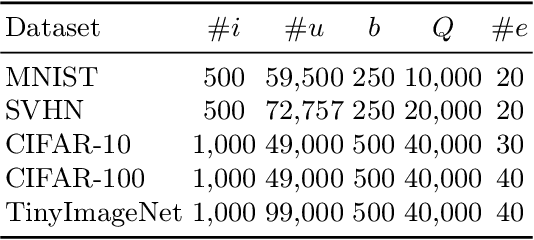
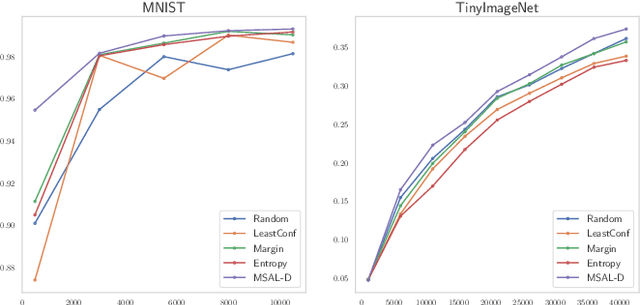
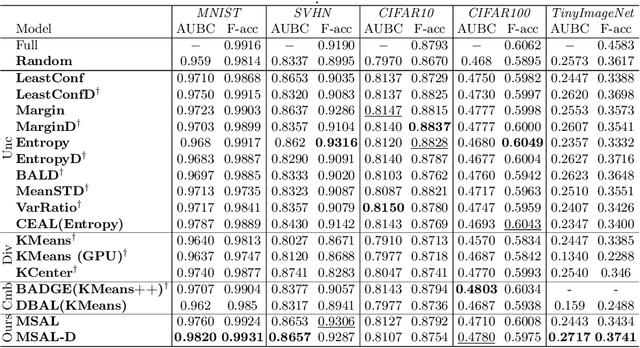
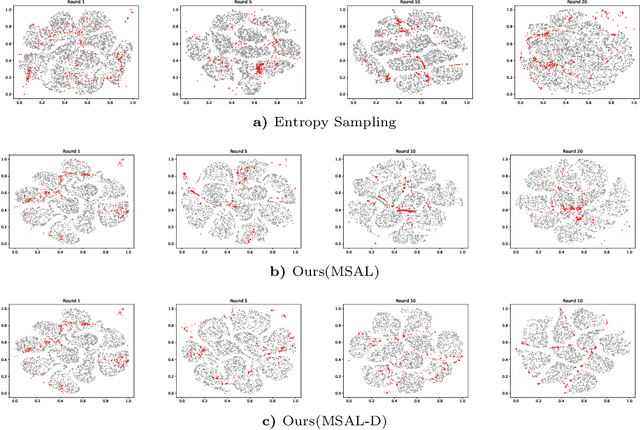
Abstract:Active Learning aims to optimize performance while minimizing annotation costs by selecting the most informative samples from an unlabelled pool. Traditional uncertainty sampling often leads to sampling bias by choosing similar uncertain samples. We propose an active learning method that utilizes fixed equiangular hyperspherical points as class prototypes, ensuring consistent inter-class separation and robust feature representations. Our approach introduces Maximally Separated Active Learning (MSAL) for uncertainty sampling and a combined strategy (MSAL-D) for incorporating diversity. This method eliminates the need for costly clustering steps, while maintaining diversity through hyperspherical uniformity. We demonstrate strong performance over existing active learning techniques across five benchmark datasets, highlighting the method's effectiveness and integration ease. The code is available on GitHub.
Compositional Entailment Learning for Hyperbolic Vision-Language Models
Oct 09, 2024



Abstract:Image-text representation learning forms a cornerstone in vision-language models, where pairs of images and textual descriptions are contrastively aligned in a shared embedding space. Since visual and textual concepts are naturally hierarchical, recent work has shown that hyperbolic space can serve as a high-potential manifold to learn vision-language representation with strong downstream performance. In this work, for the first time we show how to fully leverage the innate hierarchical nature of hyperbolic embeddings by looking beyond individual image-text pairs. We propose Compositional Entailment Learning for hyperbolic vision-language models. The idea is that an image is not only described by a sentence but is itself a composition of multiple object boxes, each with their own textual description. Such information can be obtained freely by extracting nouns from sentences and using openly available localized grounding models. We show how to hierarchically organize images, image boxes, and their textual descriptions through contrastive and entailment-based objectives. Empirical evaluation on a hyperbolic vision-language model trained with millions of image-text pairs shows that the proposed compositional learning approach outperforms conventional Euclidean CLIP learning, as well as recent hyperbolic alternatives, with better zero-shot and retrieval generalization and clearly stronger hierarchical performance.
Hyp2Nav: Hyperbolic Planning and Curiosity for Crowd Navigation
Jul 19, 2024



Abstract:Autonomous robots are increasingly becoming a strong fixture in social environments. Effective crowd navigation requires not only safe yet fast planning, but should also enable interpretability and computational efficiency for working in real-time on embedded devices. In this work, we advocate for hyperbolic learning to enable crowd navigation and we introduce Hyp2Nav. Different from conventional reinforcement learning-based crowd navigation methods, Hyp2Nav leverages the intrinsic properties of hyperbolic geometry to better encode the hierarchical nature of decision-making processes in navigation tasks. We propose a hyperbolic policy model and a hyperbolic curiosity module that results in effective social navigation, best success rates, and returns across multiple simulation settings, using up to 6 times fewer parameters than competitor state-of-the-art models. With our approach, it becomes even possible to obtain policies that work in 2-dimensional embedding spaces, opening up new possibilities for low-resource crowd navigation and model interpretability. Insightfully, the internal hyperbolic representation of Hyp2Nav correlates with how much attention the robot pays to the surrounding crowds, e.g. due to multiple people occluding its pathway or to a few of them showing colliding plans, rather than to its own planned route.
Lightweight Uncertainty Quantification with Simplex Semantic Segmentation for Terrain Traversability
Jul 18, 2024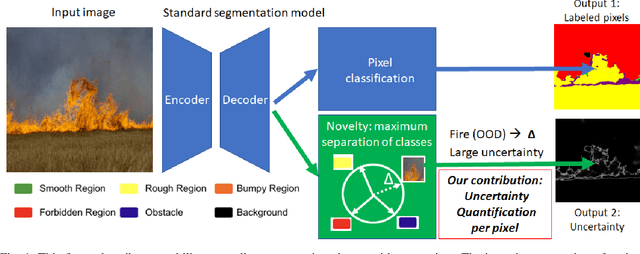
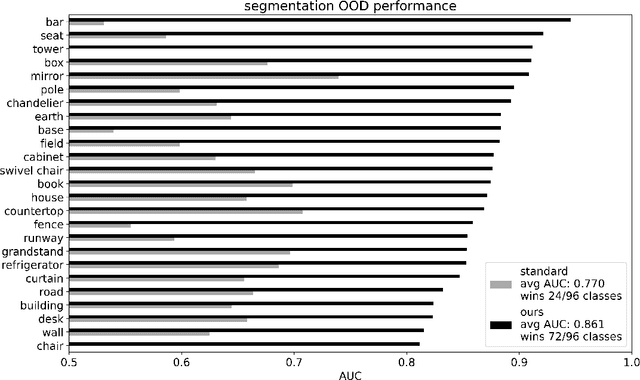
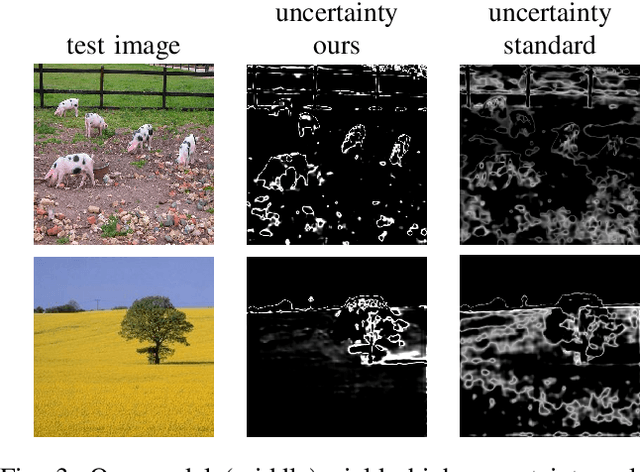
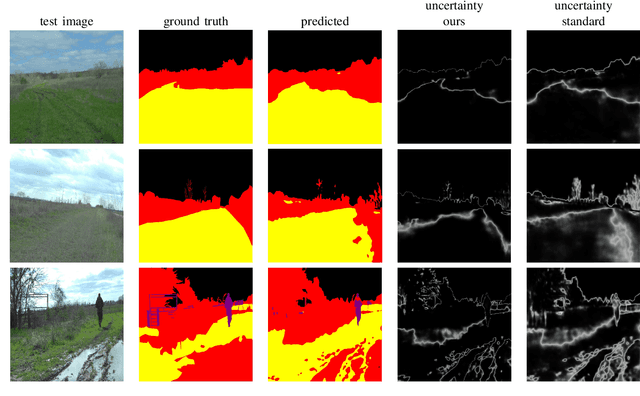
Abstract:For navigation of robots, image segmentation is an important component to determining a terrain's traversability. For safe and efficient navigation, it is key to assess the uncertainty of the predicted segments. Current uncertainty estimation methods are limited to a specific choice of model architecture, are costly in terms of training time, require large memory for inference (ensembles), or involve complex model architectures (energy-based, hyperbolic, masking). In this paper, we propose a simple, light-weight module that can be connected to any pretrained image segmentation model, regardless of its architecture, with marginal additional computation cost because it reuses the model's backbone. Our module is based on maximum separation of the segmentation classes by respective prototype vectors. This optimizes the probability that out-of-distribution segments are projected in between the prototype vectors. The uncertainty value in the classification label is obtained from the distance to the nearest prototype. We demonstrate the effectiveness of our module for terrain segmentation.
* 10 pages
Find the Cliffhanger: Multi-Modal Trailerness in Soap Operas
Jan 29, 2024Abstract:Creating a trailer requires carefully picking out and piecing together brief enticing moments out of a longer video, making it a challenging and time-consuming task. This requires selecting moments based on both visual and dialogue information. We introduce a multi-modal method for predicting the trailerness to assist editors in selecting trailer-worthy moments from long-form videos. We present results on a newly introduced soap opera dataset, demonstrating that predicting trailerness is a challenging task that benefits from multi-modal information. Code is available at https://github.com/carlobretti/cliffhanger
Latent Space Editing in Transformer-Based Flow Matching
Dec 17, 2023
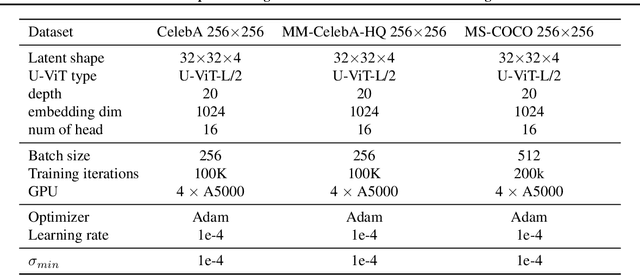
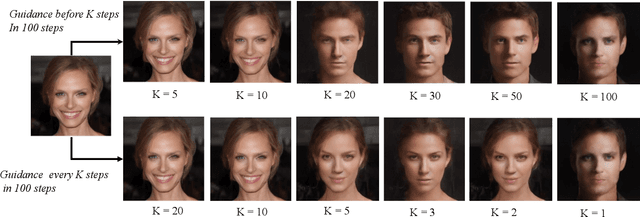

Abstract:This paper strives for image editing via generative models. Flow Matching is an emerging generative modeling technique that offers the advantage of simple and efficient training. Simultaneously, a new transformer-based U-ViT has recently been proposed to replace the commonly used UNet for better scalability and performance in generative modeling. Hence, Flow Matching with a transformer backbone offers the potential for scalable and high-quality generative modeling, but their latent structure and editing ability are as of yet unknown. Hence, we adopt this setting and explore how to edit images through latent space manipulation. We introduce an editing space, which we call $u$-space, that can be manipulated in a controllable, accumulative, and composable manner. Additionally, we propose a tailored sampling solution to enable sampling with the more efficient adaptive step-size ODE solvers. Lastly, we put forth a straightforward yet powerful method for achieving fine-grained and nuanced editing using text prompts. Our framework is simple and efficient, all while being highly effective at editing images while preserving the essence of the original content. Our code will be publicly available at https://taohu.me/lfm/
Motion Flow Matching for Human Motion Synthesis and Editing
Dec 14, 2023Abstract:Human motion synthesis is a fundamental task in computer animation. Recent methods based on diffusion models or GPT structure demonstrate commendable performance but exhibit drawbacks in terms of slow sampling speeds and error accumulation. In this paper, we propose \emph{Motion Flow Matching}, a novel generative model designed for human motion generation featuring efficient sampling and effectiveness in motion editing applications. Our method reduces the sampling complexity from thousand steps in previous diffusion models to just ten steps, while achieving comparable performance in text-to-motion and action-to-motion generation benchmarks. Noticeably, our approach establishes a new state-of-the-art Fr\'echet Inception Distance on the KIT-ML dataset. What is more, we tailor a straightforward motion editing paradigm named \emph{sampling trajectory rewriting} leveraging the ODE-style generative models and apply it to various editing scenarios including motion prediction, motion in-between prediction, motion interpolation, and upper-body editing. Our code will be released.
 Add to Chrome
Add to Chrome Add to Firefox
Add to Firefox Add to Edge
Add to Edge